1 單點登錄 關於單點登錄的原理,我覺得下麵這位老哥講的比較清楚,有興趣可以看一下,下麵我把其中的重點在此做個筆記總結 https://juejin.cn/post/6844904079274197005 主流的單點登錄都是基於共用 cookie 來實現的 1.1 同域單點登錄 適用場景:都是企業內 ...
1 單點登錄
關於單點登錄的原理,我覺得下麵這位老哥講的比較清楚,有興趣可以看一下,下麵我把其中的重點在此做個筆記總結
https://juejin.cn/post/6844904079274197005
主流的單點登錄都是基於共用 cookie 來實現的
1.1 同域單點登錄
適用場景:都是企業內部系統,所有系統都適用同一個一級功能變數名稱,並通過不同的二級功能變數名稱區分
舉個例子:公司有一個一級功能變數名稱cjs.com,我們有三個系統需要實現單點登錄,分別是門戶系統(sso.cjs.com)、應用系統1(app1.cjs.com)、應用系統2(app2.cjs.com)
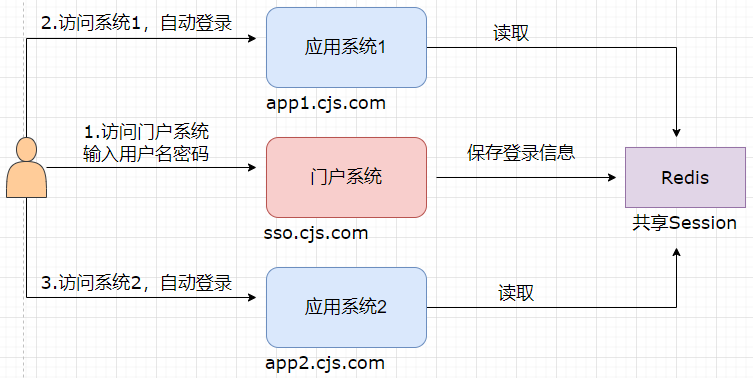
核心原理:
- 門戶系統設置 Cookie 的 domain 為一級功能變數名稱也就是 cjs.com,這樣就可以共用門戶的 Cookie 給所有的使用該功能變數名稱(xxx.cjs.com)的系統
- 使用 Spring Session 等技術讓所有系統共用 Session
- 所有登錄都跳轉到門戶系統去登錄,也就說門戶系統有兩個頁面就夠了:登錄頁(login.html)和首頁(index.html)。通過首頁鏈接可以進入到各子業務系統。
- 可以在加一層網關(Spring Cloud Gateway)
1.2 跨域單點登錄
由於功能變數名稱不一樣不能共用 Cookie 了,這樣就需要通過一個單獨的授權服務(UAA)來做統一登錄,並基於共用UAA的 Cookie 來實現單點登錄。
舉個例子:公司接到一個大項目,把其中部分系統外包給第三方來做,或者直接採購第三方服務商的系統,或者是子業務系統1採購服務商A的系統,子系統2採購B服務商的系統。無論什麼情況,總之系統集成就需要單點登錄。
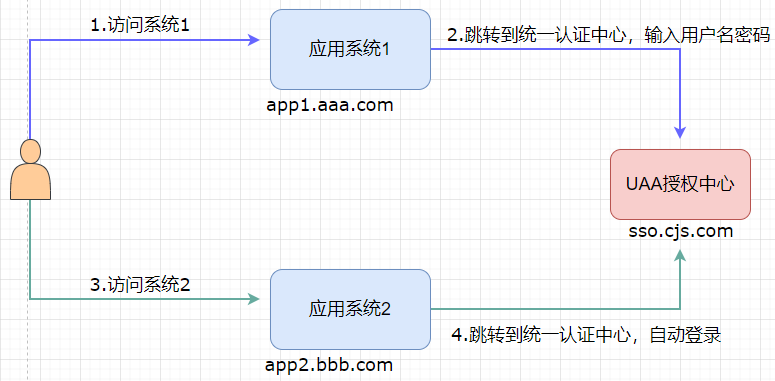
核心原理:
- 用戶訪問系統1,如果未登錄,則跳轉到UAA系統請求授權,並輸入用戶名/密碼完成登錄
- 登錄成功後UAA系統把登錄信息保存到 Session 中,併在瀏覽器寫入域為 sso.com 的 Cookie
- 用戶訪問系統2,如未登錄,則跳轉到UAA系統請求授權
- 由於是跳轉到UAA系統的功能變數名稱 sso.com 下,所以能通過瀏覽器中UAA的 Cookie 讀取到 Session 中之前的登錄信息完成單點登錄
1.3 基於OAuth2的跨域單點登錄
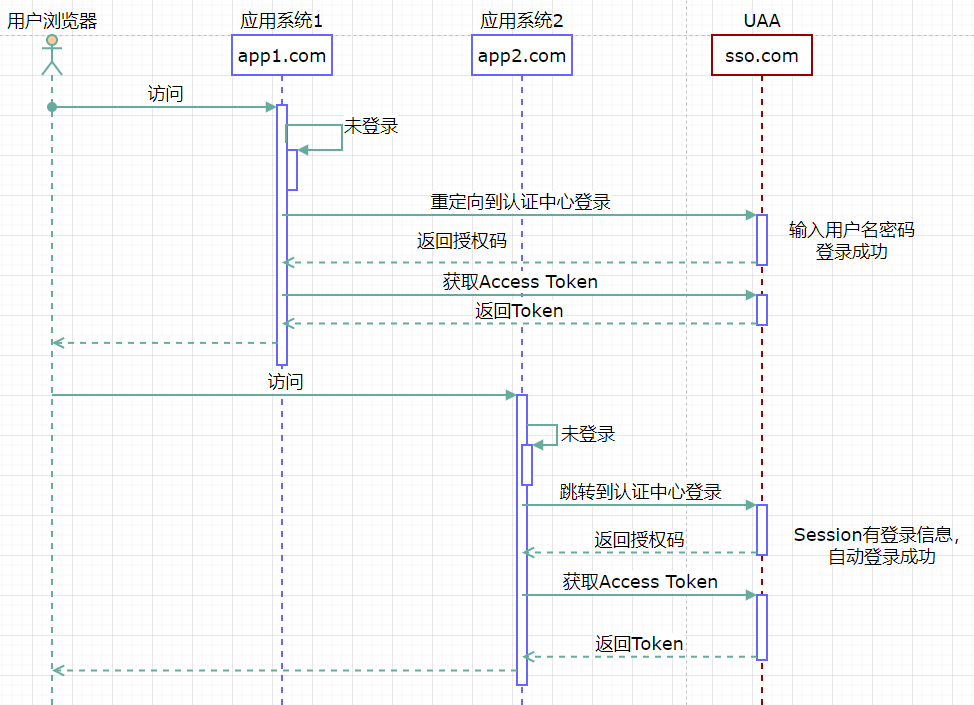
1.4 前後端分離的跨域單點登錄
前後端分離的核心概念是後端僅返回前端所需的數據,不再渲染HTML頁面,前端HTML頁面通過AJAX調用後端的RESTFUL API介面並使用JSON數據進行交互
跨域間的前後端分離項目也是基於共用統一授權服務(UAA)的cookie來實現單點登錄的,但是與非前後分離不一樣的是存在以下問題需要解決
- 沒有過濾器/攔截器,需要在前端判斷登錄狀態
- 需要自己實現oauth2的授權碼模式交互邏輯
- 需要解決安全性問題,oauth2的clientSecret參數放在前端不安全
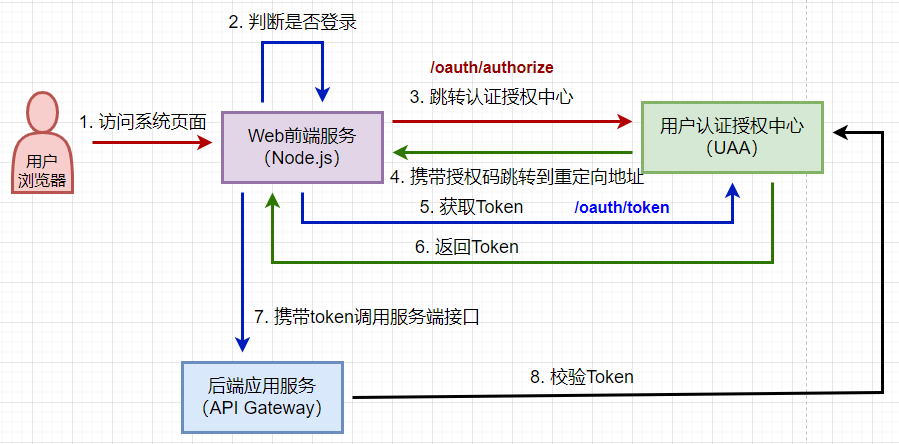
補充:前端獲取授權碼
- redirect_uri寫前端地址
- 重定向到前端頁面,頁面獲取到授權碼code,拿code換token
示例參考:
http://localhost:9000/callback.html?code=xxx
<!DOCTYPE html> <html lang="zh"> <head> <meta charset="UTF-8"> <title>Title</title> <script type="text/javascript" src="jquery-3.6.0.min.js"></script> <script> /** * 獲取指定請求參數的值 * @param name 請求參數名稱 * @returns {string|null} */ function getQueryParameter(name) { let queryString = window.location.search.substring(1); let params = queryString.split("&"); for (let i = 0; i < params.length; i++) { let pair = params[i].split("="); if (name == pair[0]) { return pair[1]; } } return null; } /** * 獲取指定請求參數的值 * @param name 請求參數名稱 * @returns {string|null} */ function getUrlParameter(name) { let reg = new RegExp("(^|&)" + name + "=([^&]*)(&|$)"); let queryString = window.location.search.substring(1); let result = queryString.match(reg); if (null != result) { return unescape(result[2]) } return null; } let authorizationCode = getUrlParameter("code"); $.post("http://localhost:8081/auth/oauth/token", { grant_type: "authorization_code", code: authorizationCode, redirect_uri: "http://localhost:9000/callback.html" }, function (resp) { console.log(resp); sessionStorage.setItem("token", resp.access_token); }); </script> </head> <body></body>
</html>
2 Spring Security OAuth 2.0遷移指南
從 Spring Security 5.2.x 開始,OAuth 2.0 Clients 和 Resource Servers 已經從 Security OAuth 2.x 遷移到 從 Spring Security,而且 Spring Security 不再提供 Authorization Server 的支持。

總之呢,Spring Security OAuth這個項目以後就處於維護狀態了,不會再更新了,建議使用Spring Security
遷移以後,很多地方都不一樣了,就我註意到的說下幾點變化
首先,以前單點登錄使用@EnableOAuth2Sso註解,現在推薦使用oauth2Login()方法
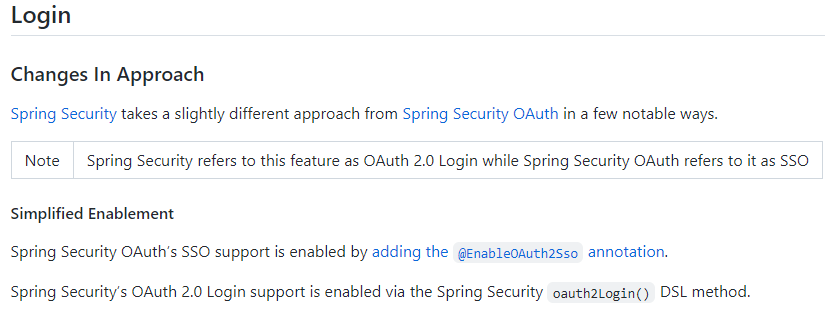
其次,授權伺服器的寫法不一樣了
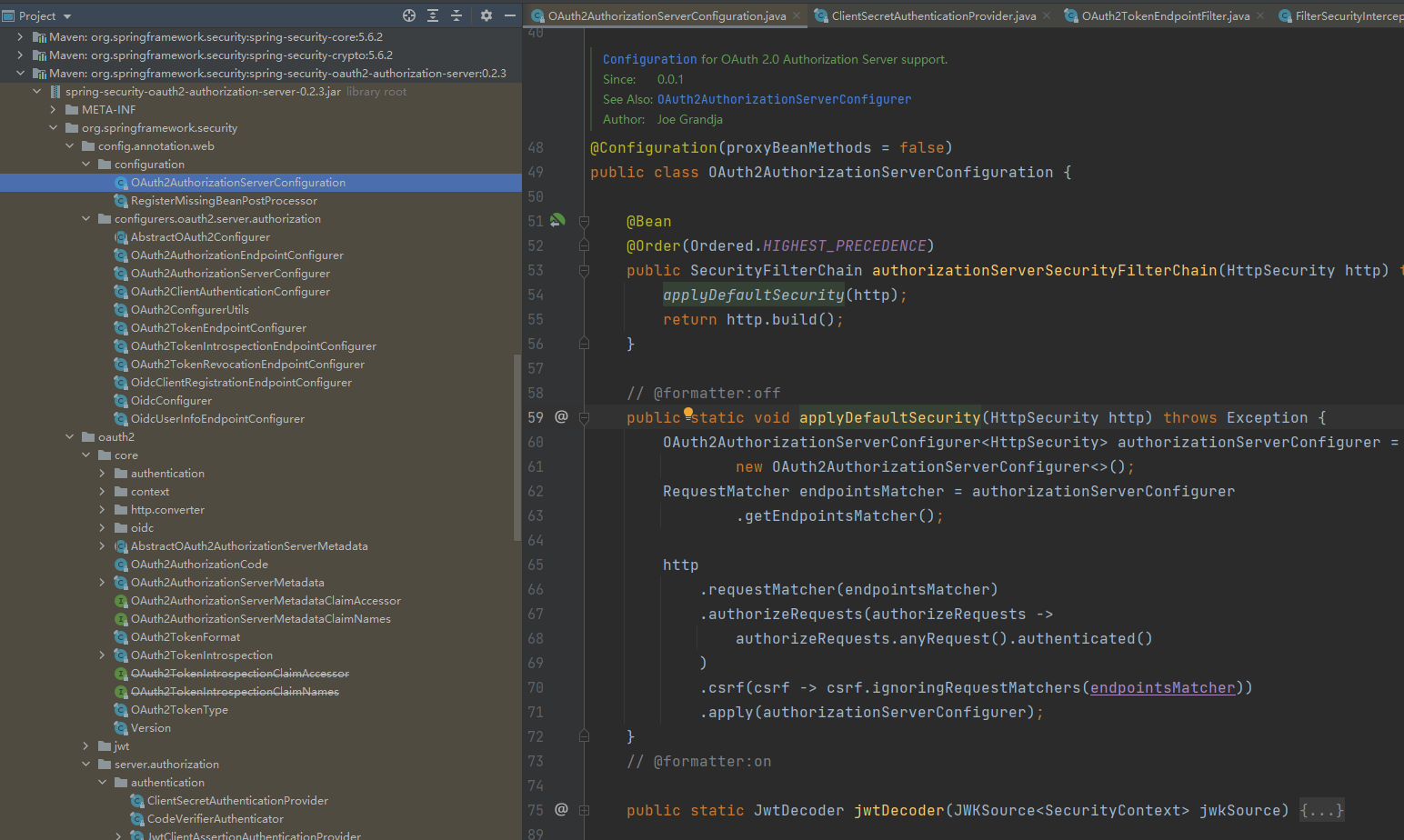
預設的端點都變成 /oauth2 開頭了
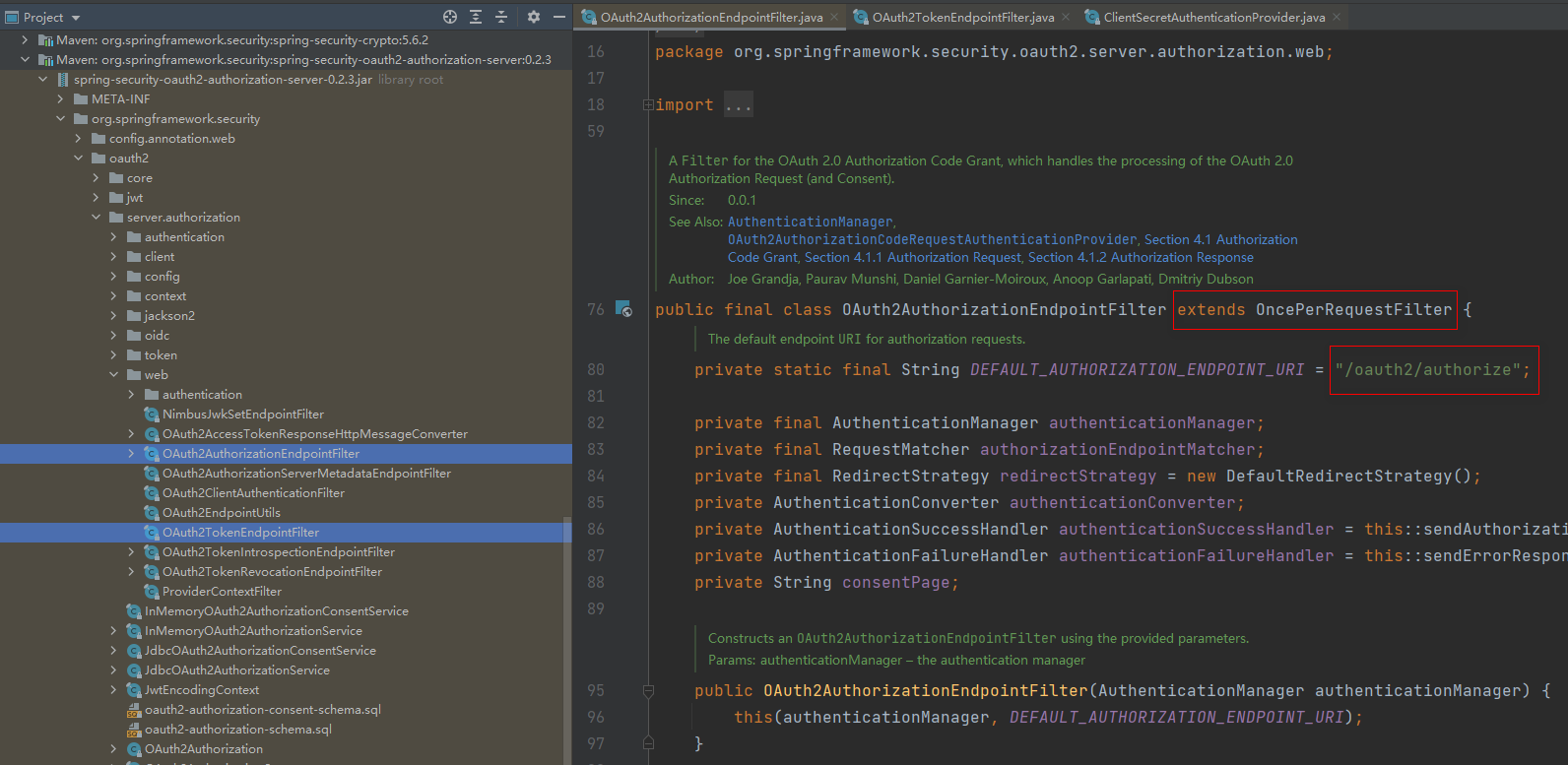

更多變化可以閱讀源碼,亦可參見 OAuth 2.0 Features Matrix 查看二者支持的特性
3 @EnableOAuth2Sso的作用
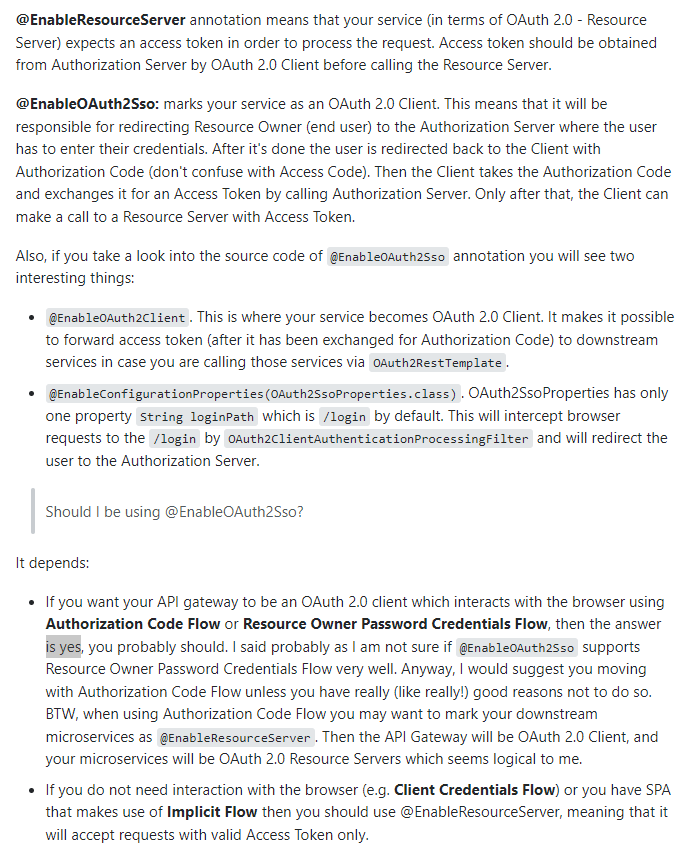
@EnableOAuth2Sso: 標記服務作為一個OAuth 2.0客戶端。這意味著它將負責將資源所有者(最終用戶)重定向到授權伺服器,在那裡用戶必須輸入他們的憑據。完成後,用戶被重定向回客戶端,並攜帶授權碼。然後,客戶端獲取授權碼,並通過調用授權伺服器以獲取訪問令牌。只有在此之後,客戶端才能使用訪問令牌調用資源伺服器。
4 補充:根據pid遞歸查找子機構
package com.soa.supervision.gateway.service.impl;
import com.alibaba.fastjson.JSON;
import com.soa.supervision.gateway.entity.SysDept;
import com.soa.supervision.gateway.repository.SysDeptRepository;
import com.soa.supervision.gateway.service.SysDeptService;
import org.apache.commons.lang3.StringUtils;
import org.springframework.data.redis.core.StringRedisTemplate;
import org.springframework.stereotype.Service;
import org.springframework.util.CollectionUtils;
import javax.annotation.Resource;
import java.util.ArrayList;
import java.util.List;
import java.util.concurrent.TimeUnit;
/**
* 機構表 服務實現類
*
* @author ChengJianSheng
* @since 2022-03-08
*/
@Service
public class SysDeptServiceImpl implements SysDeptService {
private static final String CACHE_PREFIX = "DEPT:";
@Resource
private SysDeptRepository sysDeptRepository;
@Resource
private StringRedisTemplate stringRedisTemplate;
/**
* 遞歸 向下查找當前機構的所有子機構
*/
@Override
public List getAllByPid(Integer pid, List list) {
List subDeptIdList = sysDeptRepository.findIdByPid(pid);
if (CollectionUtils.isEmpty(subDeptIdList)) {
return new ArrayList<>();
} else {
list.addAll(subDeptIdList);
subDeptIdList.forEach(e->{
getAllByPid(e, list);
});
}
return list;
}
@Override
public String getSubDeptIdListByPid(Integer pid) {
String key = CACHE_PREFIX + pid;
String val = stringRedisTemplate.opsForValue().get(key);
if (StringUtils.isBlank(val)) {
synchronized (SysDept.class) {
if (StringUtils.isBlank(val)) {
List deptIds = getAllByPid(pid, new ArrayList<>());
deptIds.add(pid);
val = JSON.toJSONString(deptIds);
stringRedisTemplate.opsForValue().set(key, val, 1, TimeUnit.HOURS);
}
}
}
return val;
}
}
package com.soa.supervision.gateway.repository;
import com.soa.supervision.gateway.entity.SysDept;
import org.springframework.data.jpa.repository.JpaRepository;
import org.springframework.data.jpa.repository.Query;
import org.springframework.data.repository.query.Param;
import java.util.List;
/**
* @Author ChengJianSheng
* @Date 2022/3/8
*/
public interface SysDeptRepository extends JpaRepository {
@Query(value = "SELECT id FROM sys_dept WHERE pid = :pid", nativeQuery = true)
List findIdByPid(@Param("pid") Integer pid);
}
5 有用的文檔
Spring Security相關
- https://docs.spring.io/spring-security/reference/index.html
- https://docs.spring.io/spring-security/reference/servlet/index.html
- https://docs.spring.io/spring-security/reference/servlet/oauth2/index.html
- https://github.com/spring-projects/spring-security-samples/tree/main
- https://github.com/spring-projects/spring-security-samples/tree/main/servlet/spring-boot/java
- https://github.com/spring-projects/spring-security-samples/tree/5.6.x/servlet/spring-boot/java/oauth2/login
- https://github.com/spring-projects/spring-security/wiki/OAuth-2.0-Migration-Guide
- https://github.com/jgrandja/spring-security-oauth-5-2-migrate
Spring Boot OAuth相關


